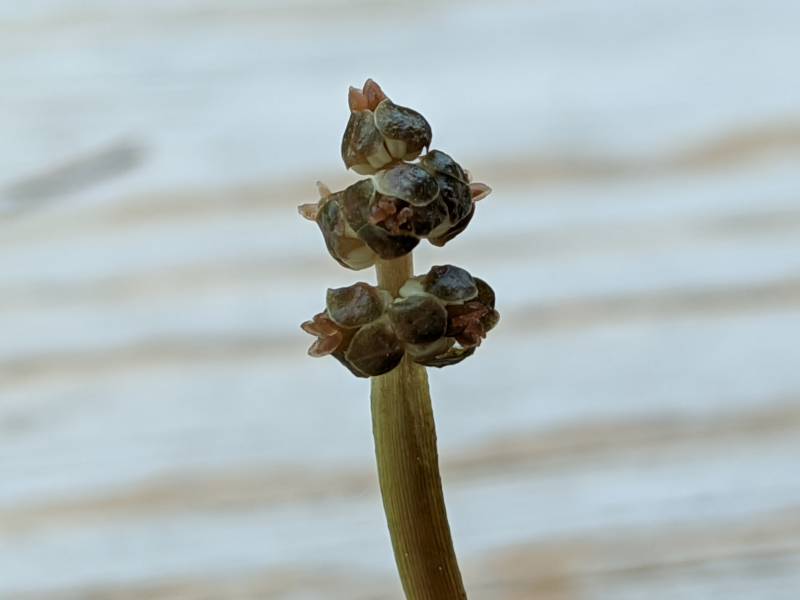Hosted by the University of Washington Herbarium, Burke Museum
Origin: Native
Herbarium search: CPNWH
Notes: FNA22: "The family has historically been considered to consist of two genera, Potamogeton and Groenlandia. Recent molecular evidence (D. H. Les, unpublished), combined with existing morphologic evidence, indicates that Potamogeton in the broad sense actually represents two separate lineages. We recognize those lineages at the generic level, Potamogeton in the strict sense and Stuckenia. Consequently, we accept three genera in the family, Potamogeton, Stuckenia, and Groenlandia.
Reproductive features are most important in separating species of Potamogeton (R. R. Haynes 1978), and we include the entire family here. The keys may not always utilize reproductive features, but they are based on fruiting individuals. We strongly recommend that no one collect specimens of Potamogetonaceae that are lacking reproductive structures.
Leaves of Potamogetonaceae are stipulate. The stipules form a tubular sheath (stipular sheath) around the stem, free from or adnate to the base of the blade. In some species the leaf and sheath of submersed leaves are adnate for part of their length, and the leaf appears to have a sheathing base with an adaxial ligule at the junction of sheath and blade or petiole.
Fruits of Potamogetonaceae are drupaceous. The fruits do have endocarps but do not have fleshy mesocarps. Mesocarps exist but never become fleshy. Consequently, the fruits are not true drupes, they are drupaceous.
Many species of Potamogetonaceae undergo extensive vegetative reproduction either by turions or stem fragmentation. Turions are excellent modes of vegetative reproduction. The structures are produced at the stem tips and eventually fall to the substrate, either by a portion of the stem breaking off or by the stem itself falling to the substrate. The turions survive an unfavorable season, germinate, and grow into new plants during the next growing season. Because the unfavorable season is usually winter in North America, turions have been called "winter buds." At least one species, Potamogeton crispus, produces turions in early summer, and the turions survive the unfavorable season (summer, in this instance), germinating in the fall. The plant then survives the winter as a young individual, only a few centimeters long, even under ice, and begins growth as the water warms in the following spring. "Winter bud" is certainly not the correct term for P. crispus. The term "turions" designates all such structures, regardless of the unfavorable season."
References:
Last updated 4/6/2009 by David Giblin.

